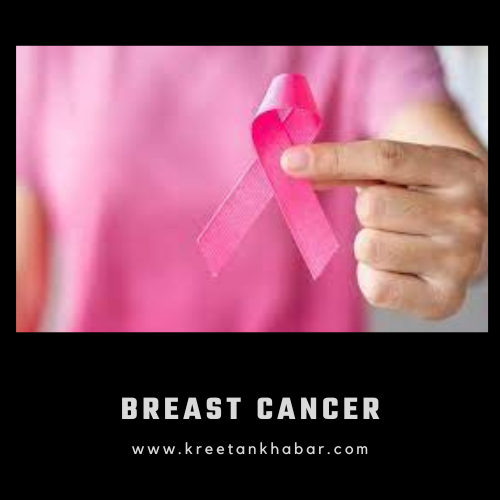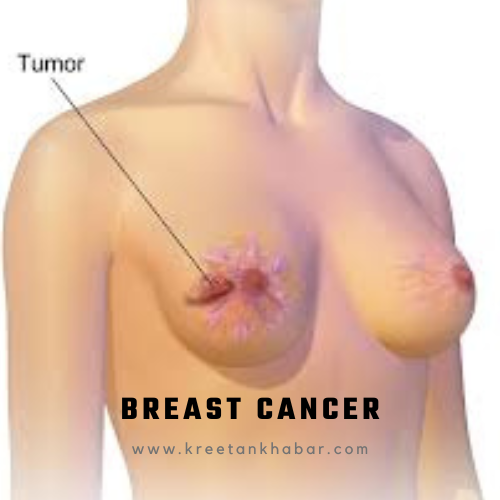Introduction
Breast cancer remains one of the most prevalent and life-threatening forms of cancer affecting millions of women worldwide. While the disease poses significant challenges, the continuous advancements in research, prevention, and treatment options are bringing renewed hope to patients and their loved ones. This article explores the latest breakthroughs in cancer research and highlights the remarkable strides made in the fight against this devastating disease.

Early Detection: A Lifesaving Imperative
Early detection remains paramount in the ongoing fight against breast cancer, as it significantly improves treatment outcomes and survival rates. The advent of mammography and other screening techniques has significantly improved the ability to detect cancer in its early stages. However, scientists are continuously working on refining existing methods and developing new technologies to enhance accuracy and accessibility.
One remarkable innovation on the horizon is the development of liquid biopsies. These blood tests analyze circulating tumor cells and cell-free DNA to detect the presence of cancerous cells, allowing for non-invasive and potentially more effective screening. Liquid biopsies hold immense promise, particularly for individuals with dense breast tissue or those at high genetic risk.
Breast Cancer Symptoms: Recognizing the Warning Signs
Breast cancer stands as a multifaceted disease with a global impact, affecting countless women across the globe and necessitating ongoing efforts in research, prevention, and treatment. Recognizing the early signs and symptoms is crucial for timely detection and treatment. While some symptoms may be non-specific and can be caused by other conditions, it is essential to be aware of potential indicators that warrant further investigation. Here are some unique points to help you understand the common symptoms associated with breast cancer:
Breast lump or thickening: The presence of a lump or thickening in the breast tissue is one of the primary symptoms of breast cancer. It may feel different from the surrounding tissue and can be painless or tender to the touch. It is important to note that not all lumps are cancerous, but any new or unusual lump should be evaluated by a healthcare professional.
Changes in breast size or shape: Breast cancer can cause noticeable changes in the size or shape of the breast. This can include swelling, shrinkage, or asymmetry between the breasts. Paying attention to any significant changes in breast appearance is crucial for early detection.
Nipple changes: Changes in the nipple can be indicative of underlying breast cancer. This may include nipple inversion (when the nipple pulls inward), dimpling or puckering of the skin around the nipple, or redness, scaling, or flaking of the nipple or areola.
Nipple discharge: While nipple discharge can be a normal occurrence, unexpected nipple discharge, particularly if it is bloody, clear, or occurs spontaneously, should be evaluated by a healthcare professional. Though not always cancer-related, it is important to investigate the underlying cause.
Breast pain or discomfort: Breast pain or discomfort is a common symptom that can have various causes, including hormonal changes or benign conditions. However, persistent or unexplained pain in the breast or armpit should not be ignored and should be evaluated by a medical professional.
Skin changes: Breast cancer can cause changes in the skin of the breast, such as redness, warmth, or the appearance of an orange peel texture (peau d’orange). These skin changes may be caused by cancer cells blocking lymph vessels in the breast.
Lymph node enlargement: The presence of swollen lymph nodes under the arm or around the collarbone can indicate the spread of breast cancer to the lymph nodes. While not always indicative of breast cancer, persistent swollen lymph nodes should be examined by a healthcare professional.
Fatigue and unexplained weight loss: In advanced stages of breast cancer, patients may experience fatigue and unexplained weight loss. These symptoms are nonspecific and can be caused by various factors, but if they persist or are accompanied by other breast cancer symptoms, medical evaluation is essential.
It’s important to remember that experiencing one or more of these symptoms does not necessarily mean you have this cancer. Many non-cancerous conditions can cause similar signs. However, any persistent or concerning symptoms should be promptly discussed with a healthcare professional, who can perform a thorough evaluation and recommend appropriate diagnostic tests if necessary. Early detection remains critical in the successful treatment of breast cancer, so staying vigilant and seeking medical attention for any suspicious changes is key to protecting your health.
Precision Medicine: Tailoring Treatment for Optimal Results
The field of precision medicine has revolutionized cancer treatment by enabling personalized approaches tailored to each patient’s unique genetic makeup. Breast cancer research has played a pivotal role in advancing precision medicine, with significant strides in targeted therapies.
One such breakthrough is the development of HER2-targeted treatments. Human Epidermal Growth Factor Receptor 2 (HER2) is a protein found in certain types of breast cancer that promotes tumor growth. HER2-targeted therapies, such as Herceptin, Perjeta, and Kadcyla, have transformed the outlook for patients with HER2-positive breast cancer. These treatments specifically inhibit the HER2 protein, resulting in improved survival rates and reduced recurrence.
Immunotherapy, another frontier in breast cancer research, harnesses the power of the immune system to combat cancer cells. Monoclonal antibodies, such as pembrolizumab and atezolizumab, have shown promise in treating triple-negative breast cancer, a particularly aggressive and challenging subtype. By blocking immune checkpoints, these therapies unleash the body’s natural defenses, leading to enhanced tumor regression and prolonged survival.
Innovative Surgical Techniques: Minimizing Invasiveness and Maximizing Outcomes
Advancements in surgical techniques have transformed the landscape of breast cancer treatment, focusing on minimizing invasiveness while maximizing cosmetic outcomes and patient comfort. One notable development is oncoplastic surgery, which combines oncological principles with plastic surgery techniques. This approach allows for tumor removal while preserving the breast’s appearance, resulting in improved psychological well-being and quality of life for patients.
Furthermore, the advent of minimally invasive procedures, such as sentinel lymph node biopsy and robotic-assisted surgery, has revolutionized surgical interventions.These techniques reduce surgical trauma, shorten recovery times, and minimize scarring, ensuring that patients can resume their normal lives more swiftly after treatment.
The Power of Awareness: Educating and Empowering
Breast cancer awareness campaigns have played a pivotal role in promoting early detection and encouraging women to take charge of their health. They have highlighted the importance of regular screenings, self-examinations, and understanding the risk factors associated with the disease.
Additionally, awareness campaigns have fostered a sense of community and support, providing a platform for survivors to share their stories and advocate for change. Through education and empowerment, these initiatives have not only saved lives but also shattered the stigma surrounding breast cancer, encouraging open dialogue and empathy.
Breast cancer ribbon
The breast cancer ribbon has become an iconic symbol in the fight against breast cancer, representing solidarity, awareness, and support for those affected by the disease. The pink ribbon, most commonly associated with this cancer, serves as a powerful reminder of the ongoing efforts to raise awareness, fund research, and provide support to individuals and their families.
The ribbon’s simplicity and universal recognition have made it a unifying symbol that transcends language and cultural barriers. It serves as a poignant reminder of the importance of early detection, regular screenings, and the need for continued research to find better treatments and ultimately a cure. The breast cancer ribbon stands as a symbol of hope, strength, and unity in the face of a disease that affects so many lives.
The breast cancer ribbon is more than just a symbol; it represents a global movement towards eradicating breast cancer and supporting those who are fighting the disease. Its vibrant pink hue represents compassion, resilience, and determination in the face of adversity. The ribbon serves as a visual reminder to raise awareness about breast cancer and encourages individuals to engage in conversations about prevention, early detection, and treatment options.
It is a powerful tool for advocacy, motivating communities to come together, raise funds for research, and support organizations that provide crucial resources to patients and their families. The breast cancer ribbon serves as a beacon of hope, reminding us that we are not alone in this battle and that united, we can make a difference.
Metastatic breast cancer
Metastatic breast cancer, also known as stage IV breast cancer, is a formidable and advanced form of the disease that occurs when breast cancer cells spread to other parts of the body beyond the breast. This stage of cancer presents unique challenges, as it has the potential to affect vital organs such as the bones, liver, lungs, or brain. Metastatic breast cancer is considered incurable, but advancements in treatment options have improved outcomes and quality of life for patients.
Managing metastatic breast cancer involves a comprehensive and individualized approach that focuses on controlling the spread of the disease, alleviating symptoms, and prolonging survival. Treatment options may include targeted therapies, hormone therapy, chemotherapy, radiation therapy, or a combination of these modalities. Palliative care also plays a crucial role, providing support to patients to enhance their comfort, emotional well-being, and overall quality of life.
Despite the challenges it presents, individuals living with metastatic breast cancer continue to demonstrate remarkable resilience, advocating for research, raising awareness, and fostering a supportive community to empower one another in their journey against this complex disease.
Inflammatory breast cancer
Inflammatory breast cancer (IBC) is a rare and aggressive form of breast cancer that accounts for a small percentage of cases. Unlike other types of breast cancer, IBC does not typically present with a distinct lump or tumor. Instead, it manifests with symptoms that mimic inflammation or infection of the breast. These symptoms include redness, swelling, warmth, and a thickening of the skin.
The affected breast may appear enlarged, feel heavy or tender, and exhibit a texture resembling an orange peel. Other signs may include nipple changes, such as inversion or discharge. Due to its aggressive nature, inflammatory breast cancer tends to spread quickly to nearby lymph nodes and other tissues. Early diagnosis and treatment are crucial for improved outcomes, making it important for individuals to seek medical attention promptly if they notice persistent and unusual changes in their breasts.
Treatment often involves a combination of chemotherapy, targeted therapy, radiation therapy, and surgery, including a mastectomy. The comprehensive approach aims to control the cancer, reduce symptoms, and improve the patient’s prognosis. Research and awareness efforts continue to advance our understanding of inflammatory breast cancer, enabling healthcare professionals to develop more effective treatment strategies and offer hope to those affected by this challenging disease.

Conclusion
While breast cancer remains a significant health challenge, the remarkable progress in research, prevention, and treatment offers renewed hope for patients and their families. From innovative screening techniques to precision medicine and minimally invasive surgical procedures, the field of cancer research continues to evolve, promising a brighter future for those affected by this formidable disease. Through continued investment in research and the collective effort of medical professionals, survivors, and advocates, we can overcome breast cancer and pave the way for improved outcomes and ultimately a world without this devastating illness.
Read also : Exploring the Delightful Boost of the Green Tea Shot 2023